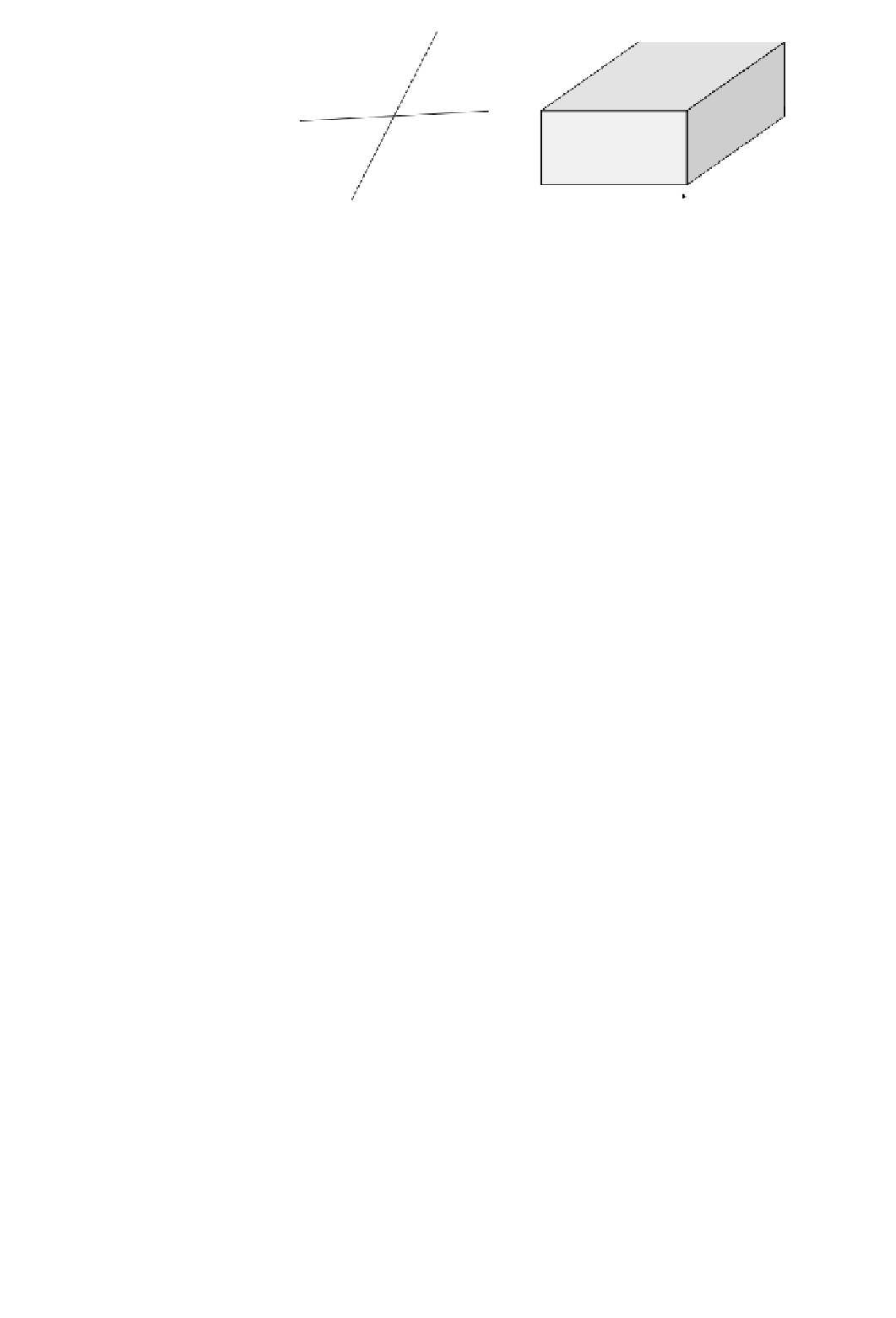Geoscience Reference
In-Depth Information
N
(b)
(c)
(a)
s
2
s
1
s
3
F
1
z
0
y
0
F
1
F2
F
2
x
0
(d
1
)
(d
2
)
y
1
y
2
z
1
z
1
x
1
x
1
E
(e)
Fig. 4.101
Strike-slip faults form to accommodate deformation in situations in which an extension and compression occur in the horizontal
surface in some section of the crust. (a) Anderson's model for the relation between a pair of strike-slip conjugate faults (
F
1 and
F
2)
and the orientation of the principal stress axes are shown. According to this model, strike-slip faults form when
2
is vertical (this will be orien-
tation of the principal strain axis
S
2
). (b) shows the stereographic projection (Cookie 19) for the model in (a). Considering an initial segment
of the crust (c), strike-slip faulting produces a progressive horizontal lengthening and shortening in directions at 90
, whereas no vertical
shortening or lengthening occurs (d
1
and d
2
). (e) Aerial view of strike-slip fault.
4.15.4
Normal faults
in all the models between the two conjugate faults formed
and the principal stress axes. Independent of the kind of
faults formed, according to Anderson's model, a pair of
conjugate faults cross each other with an angle of 60
Normal faults form in tectonic contexts in which there is
horizontal extension in the crust. As discussed previously,
following Anderson's theory the larger principal stress is
due to the vertical load and so the remaining axes has to be
of a lesser compressive magnitude. There are a number of
geologic settings in which normal faults form, both in con-
tinental and oceanic environments; the most important
; the
main principal stress
1
always bisects the acute angle
between the faults (following Coulomb's criterion that
predicts fractures produced at 30
from
1
),
2
is located
at the intersection of the fault planes and
3
is located at
the bisector of the obtuse angle formed between the faults.


















































Search WWH ::

Custom Search